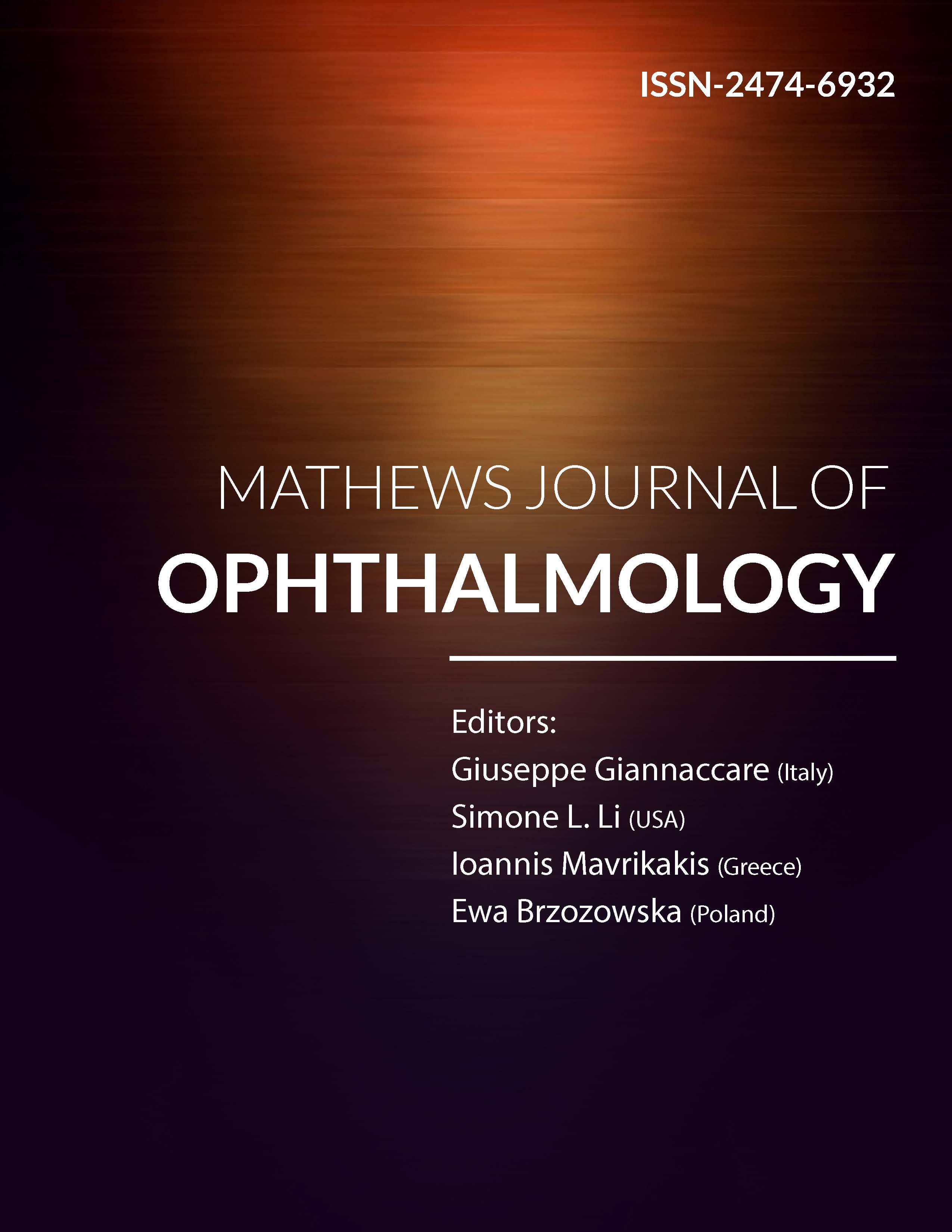
Information Links
Previous Issues Volume 8, Issue 1 - 2023
The Outcomes of Asthenopia after ICL Implantation and Its Related Factors
Chen Haiting1,*, Liu Yu2, Zhang Xinqiao2, Li Xing2, Liu Ying3
1Doctor of Medicine, Department of Ophthalmology, Cangzhou Central Hospital, China
2Master of Medicine, Department of Ophthalmology, Cangzhou Central Hospital, China
3Bachelor of Nursing, Department of medicine, Cangzhou Central Hospital, China
*Corresponding author: Chen Haiting, Department of Ophthalmology, Cangzhou Central Hospital, No. 16 Xinhua West Road, Yunhe District, Cangzhou, Hebei, Zip code: 061000, China, Phone: 0086-0317-2075531, Fax: 0086-0317-3552591; Email: [email protected].
Received Date: December 15, 2022
Published Date: January 17, 2023
Citation: Haiting C, et al. (2023). The Outcomes of Asthenopia after ICL Implantation and Its Related Factors. Mathews J Ophthalmol. 8(1):30.
Copyrights: Haiting C, et al. © (2023).
ABSTRACT
Objective: To evaluate the changes of visual fatigue symptoms, accommodative functions, ocular surface conditions, and high-order aberrations (HOA) after implantation of Implantable Collamer Lens (ICL), and explore their effects on asthenopia. Methods: Design: prospective observational case series. Patients with ametropia who underwent ICL surgeries and completed 3-month follow-up periods in our hospital were enrolled. Asthenopia degrees, amplitude of accommodation (AA), positive/negative relative accommodation (PRA/NRA), accommodative facility (AF), the ratio of accommodative convergence and accommodation (AC/A), Schirmer I test, noninvasive breakup time (NBUT), and HOA were examined and analyzed preoperatively and at 1 week,1 month and 3 months postoperatively. Results: Symptoms of asthenopia: the symptoms of asthenopia were significantly worse at 1 week after ICL surgeries than those before surgeries but increased gradually as time went by. The asthenopia scores 1 month after surgeries were still higher than those before ICL surgeries, eventually recovered at 3 months postoperatively. AA, AF, AC/A decreased 1 week postoperatively, returned to the baseline at 1 month and were higher at 3 months after surgeries. NBUT at 1 week, 1 month and 3 months after surgeries were significantly decreased and was the lowest at 1 week postoperatively. PRA, NRA, Schiermer values and HOA had no significant change. 3. Correlation analysis showed that the worse AF and NBUT, the more severe the symptoms of asthenopia. Conclusion: The symptoms of asthenopia aggravate transiently after ICL implantation surgeries, but improved gradually with time. AF and NBUT were important factors affecting the changes of asthenopia.
Keywords: Implantable Collamer Lens, implantation, Asthenopia, Accommodation, Dry eye.